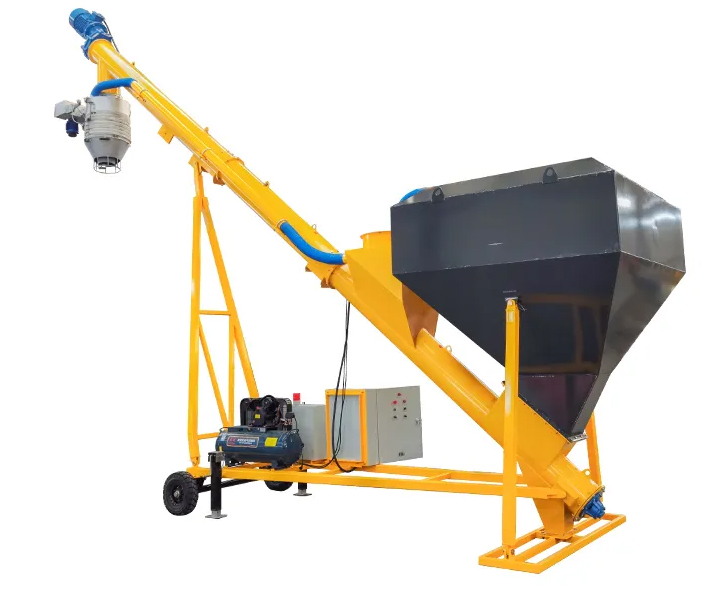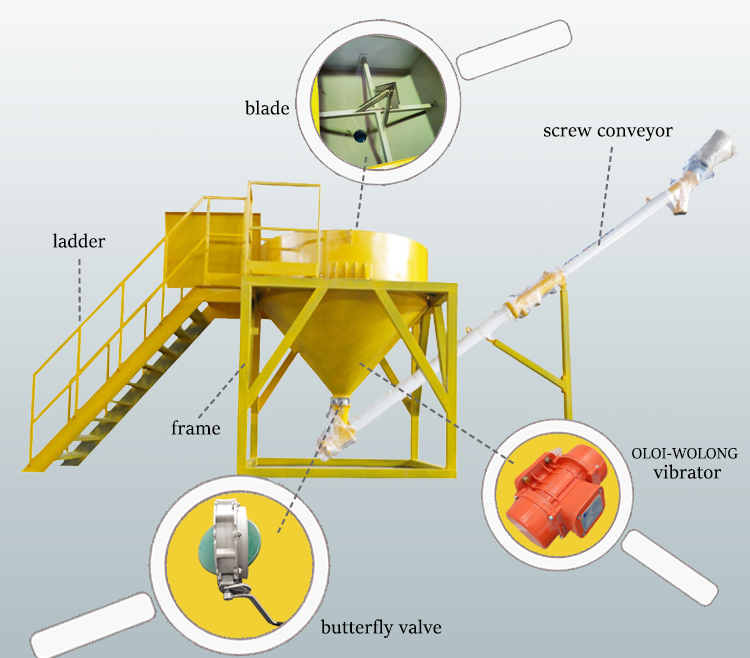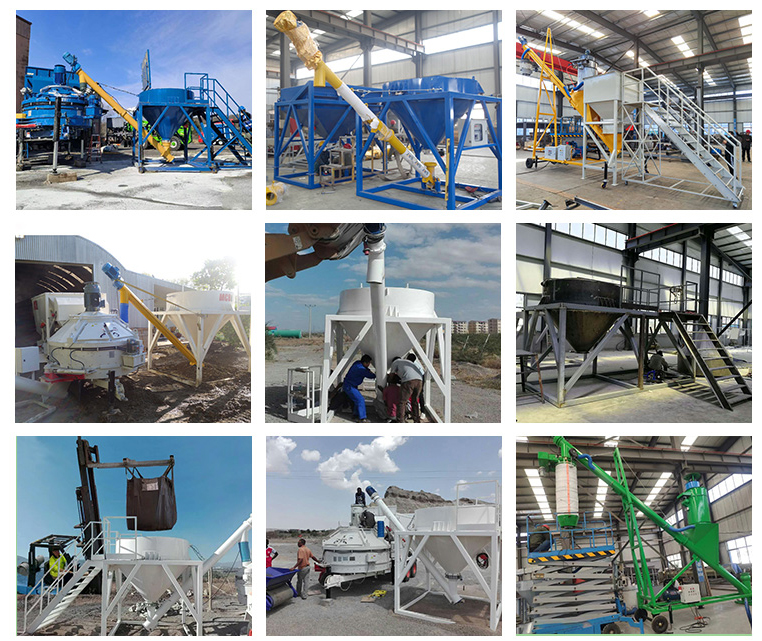The application of screw conveyors in the handling and transport of rock phosphate is to ensure efficient and gentle transport of the material while maintaining product quality and safety. By choosing a conveyor that is specifically designed for the unique requirements of rock phosphate handling, mining and mineral processing operators can enhance the efficiency and sustainability of their operations.

The function of a screw conveyor when transporting phosphate rock is to move material from one location to another in a controlled and efficient manner. Here are some specific functions of screw conveyors in this application:
Feeding: Used to feed phosphate rock to other machines or equipment such as crushers, grinders or mixing systems.
Transportation: For long-distance and uphill transportation of phosphate rock, the conveyor can be configured to the required length, height and angle, and can transport the material gently and without damage, ensuring that the quality of the material is maintained throughout the process.
Loading and unloading: It can be used to load and unload phosphate rock from trucks or other transport vehicles. The conveyor is designed to handle the large volumes of phosphate rock typically transported by these vehicles.

While screw conveyors can be an effective method for handling rock phosphate, there are some common challenges that can arise when using them for this purpose. Here are a few of the most common issues that operators may encounter when using screw conveyors for rock phosphate:
Abrasion: Rock phosphate can be highly abrasive, which can cause wear and damage to the conveyor components over time. To mitigate this issue, operators may need to use wear-resistant materials for the screw and trough, or implement regular maintenance and replacement schedules to prevent excessive wear.
Caking and bridging: Rock phosphate can be prone to caking and bridging, which can cause blockages in the conveyor and disrupt the flow of material. To prevent these issues, operators may need to use specialized hopper designs, agitators, or other equipment to maintain a consistent flow of material into the conveyor.
Dust emissions: As mentioned earlier, rock phosphate can create a significant amount of airborne dust during transport and processing. To minimize dust emissions, operators may need to implement dust collection and filtration systems, or use specialized conveyor designs that are better suited to handling dusty materials.
Corrosion: Depending on the specific type of rock phosphate being handled, the material may be corrosive to certain types of conveyor components. To prevent corrosion, operators may need to use corrosion-resistant materials for the conveyor, or apply coatings or linings to protect vulnerable components.
Maintenance and repair: Screw conveyors require regular maintenance and occasional repairs to ensure proper operation. However, accessing and repairing the conveyor can be challenging in some applications, particularly if the conveyor is located in a confined space or in a hard-to-reach location.
Overall, by understanding these common challenges and implementing appropriate measures to mitigate them, operators can ensure that their screw conveyor systems are able to handle rock phosphate effectively and efficiently.
1.Abrasion Resistant: Conveyors are constructed of corrosion and abrasion resistant materials such as stainless steel or other durable alloys.
2.Ease of control: Conveyors should be equipped with variable speed drives to adjust to changing processing conditions to ensure they can handle the required volume of phosphate rock while maintaining a consistent feed rate
3.Not easy to agglomerate: The hopper of the conveyor should be equipped with a vibrator or other device to prevent the phosphate rock from bridging or agglomerating.
4.Dust control: Because phosphate rock will generate a lot of air dust during transportation and processing. The conveyor is equipped with a dust removal and filtration system to prevent dust from escaping into the surrounding environment.

The client operates several phosphate mines and processing plants in Morocco and needed a reliable and efficient method of transporting phosphate rock from the mines to the processing plants. To meet this demand, the customer installed a series of screw conveyors at the mine site.
Solution: The screw conveyor was designed to transport the phosphate rock over distances of several kilometers and up steep slopes, while minimizing dust emissions and maintaining the quality of the material. Conveyors are equipped with dust collection and filtration systems to prevent dust from escaping into the environment and are designed to be gentle on materials to prevent breakage or degradation.
Result: Customer feedback that the screw conveyor is highly reliable and efficient, seamlessly transporting large volumes of phosphate rock from the mine to the processing plant. Using a screw conveyor can also help reduce labor costs and improve safety by minimizing the need to manually handle materials and reducing worker dust exposure.

By choosing a conveyor that is specifically designed for the unique requirements of rock phosphate handling, mining and mineral processing operators can enhance the efficiency and sustainability of their operations.
Address:China,Yanjin county forest park gate to the west 1000 meters north road.